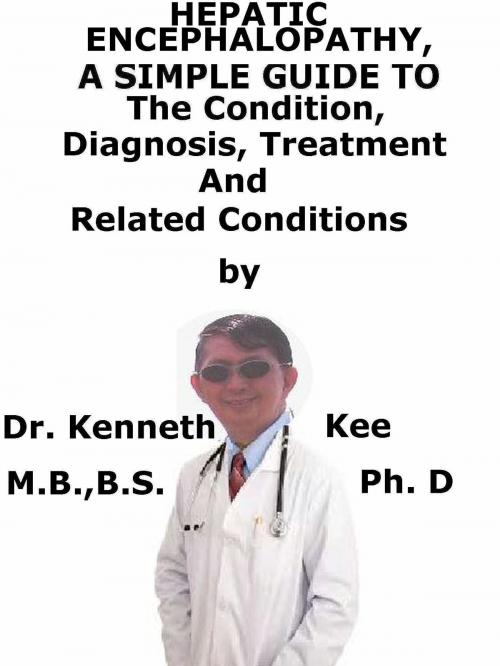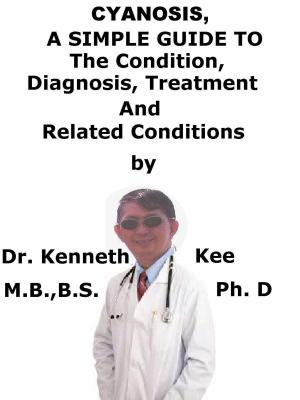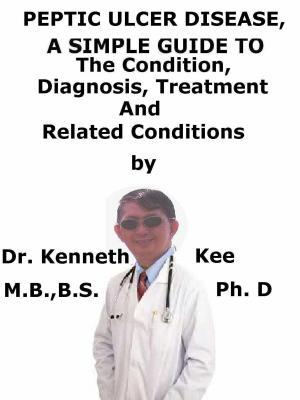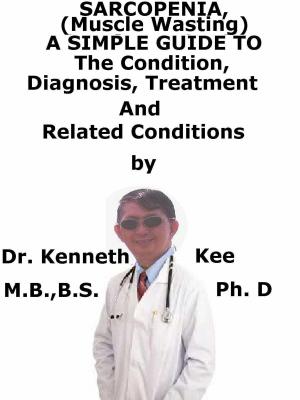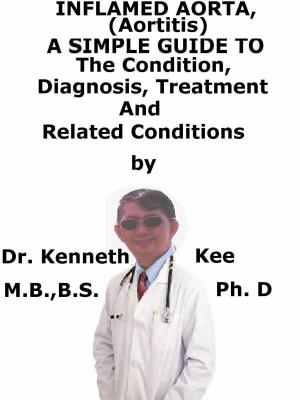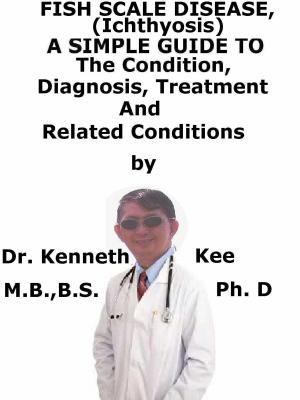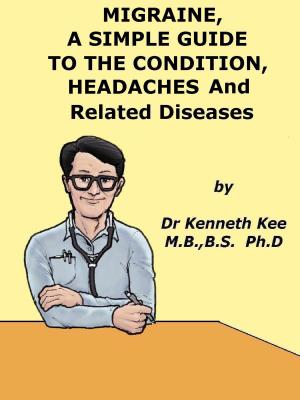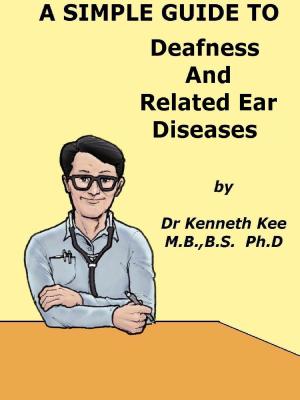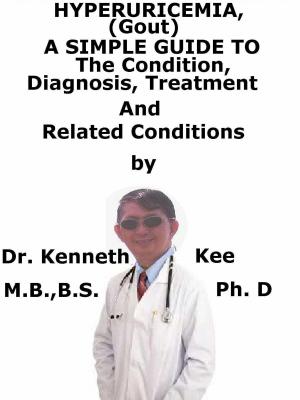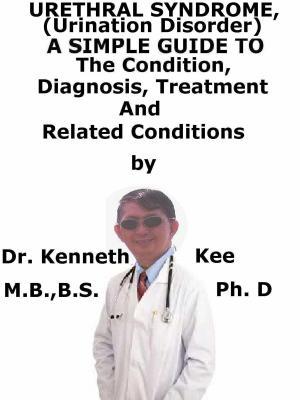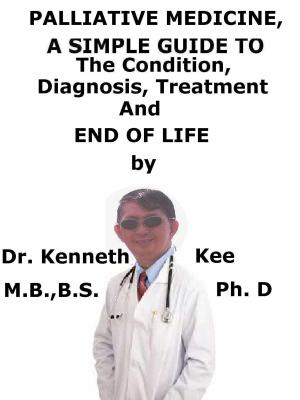Hepatic Encephalopathy, A Simple Guide To The Condition, Diagnosis, Treatment And Related Conditions
Nonfiction, Health & Well Being, Health, Ailments & Diseases, Nervous System & the Brain, Medical| Author: | Kenneth Kee | ISBN: | 9781370466382 |
| Publisher: | Kenneth Kee | Publication: | January 29, 2018 |
| Imprint: | Smashwords Edition | Language: | English |
| Author: | Kenneth Kee |
| ISBN: | 9781370466382 |
| Publisher: | Kenneth Kee |
| Publication: | January 29, 2018 |
| Imprint: | Smashwords Edition |
| Language: | English |
This book describes Hepatic Encephalopathy, Diagnosis and Treatment and Related Diseases
Hepatic encephalopathy happens when the liver is not able to eliminate toxins from the blood.
This is called loss of brain function following the continual liver disease.
This disorder may occur suddenly or develop slowly over time.
Hepatic encephalopathy, a disorder present in some patients with cirrhosis, may present with personality changes, intellectual impairment, and a reduced level of consciousness.
The diversion of portal blood into the systemic circulation seems to be a factor for the syndrome.
Hepatic encephalopathy is regarded as a group of neuropsychiatric abnormalities in patients with liver failure, after exclusion of other known brain disease.
Hepatic encephalopathy can be subdivided into covert hepatic encephalopathy and overt hepatic encephalopathy.
Covert hepatic encephalopathy is a sub-medical, less severe presentation of hepatic encephalopathy and needs psychometric testing for diagnosis.
Overt hepatic encephalopathy has an important impact on a patient's quality of life, such as employment and driving ability and is linked with higher admissions to hospital and with death
Causes
An important function of the liver is to convert toxic substances in the body to harmless material.
When the liver is injured, these toxins can accumulate in the bloodstream and impair the function of the nervous system.
This disorder can happen suddenly and the patient may become ill very quickly.
Frequent causes of chronic liver disease in the USA are:
1.Chronic hepatitis B or hepatitis C infection
2.Alcohol abuse
3.Autoimmune hepatitis
4.Bile duct disorders
4.Some medicines
5.Non-alcoholic fatty liver disease (NAFLD) and nonalcoholic steatohepatitis (NASH)
Once the patient has liver damage, episodes of worsening brain function may be triggered by:
1.Body is low on water or fluids
2.Eating too much protein
3.Low potassium or sodium levels
4.Bleeding from the intestines, stomach, or esophagus
5.Infections
6.Kidney disorders
7.Low oxygen levels in the body
8.Shunt placement or complications
9.Surgery
10.Narcotic pain or sedative medicines
Various hypotheses have been proposed to clarify the pathogenesis of hepatic encephalopathy in patients with liver cirrhosis.
1.Changed brain energy
2.Ammonia hypothesis
3.GABA hypothesis
Early symptoms may be mild and are:
1.Breath with a musty or sweet odor
2.Change in sleep patterns
3.Changes in thinking
4.Confusion that is mild
5.Forgetfulness
6.Mental fogginess
7.Personality or mood changes
8.Poor concentration
9.Poor judgment
10.Worsening of handwriting or loss of other small hand movements
More severe symptoms may be:
1.Abnormal movements or shaking of hands or arms
2.Agitation, excitement, or seizures (occur rarely)
3.Disorientation
4.Drowsiness or confusion
5.Strange behavior or severe personality changes
6.Slurred speech
7.Slowed or sluggish movement
People with hepatic encephalopathy can become:
1.Unconscious,
2.Unresponsive, and
3.Possibly enter a coma
Diagnosis
Signs of nervous system changes such as confusion, flapping of hands
Signs of liver disease such as jaundice and ascites
Abnormal liver function
Arterial ammonia levels are raised
MRI of brain and liver
Treatment
An assessment of the blood ammonia level may be useful in such patients.
Precipitants of hepatic encephalopathy should be corrected (e.g., hypovolemia, metabolic disturbances, GI bleeding, infection, constipation).
Lactulose
Antibiotics such as neomycin and Rifaximin
Protein restriction
Flumazenil (benzodiazepine antagonist)
L-ornithine L-aspartate
Sodium benzoate
TABLE OF CONTENT
Introduction
Chapter 1 Hepatic Encephalopathy
Chapter 2 Causes
Chapter 3 Symptoms
Chapter 4 Diagnosis
Chapter 5 Treatment
Chapter 6 Prognosis
Chapter 7 Hepatitis
Chapter 8 Encephalitis
Epilogue
This book describes Hepatic Encephalopathy, Diagnosis and Treatment and Related Diseases
Hepatic encephalopathy happens when the liver is not able to eliminate toxins from the blood.
This is called loss of brain function following the continual liver disease.
This disorder may occur suddenly or develop slowly over time.
Hepatic encephalopathy, a disorder present in some patients with cirrhosis, may present with personality changes, intellectual impairment, and a reduced level of consciousness.
The diversion of portal blood into the systemic circulation seems to be a factor for the syndrome.
Hepatic encephalopathy is regarded as a group of neuropsychiatric abnormalities in patients with liver failure, after exclusion of other known brain disease.
Hepatic encephalopathy can be subdivided into covert hepatic encephalopathy and overt hepatic encephalopathy.
Covert hepatic encephalopathy is a sub-medical, less severe presentation of hepatic encephalopathy and needs psychometric testing for diagnosis.
Overt hepatic encephalopathy has an important impact on a patient's quality of life, such as employment and driving ability and is linked with higher admissions to hospital and with death
Causes
An important function of the liver is to convert toxic substances in the body to harmless material.
When the liver is injured, these toxins can accumulate in the bloodstream and impair the function of the nervous system.
This disorder can happen suddenly and the patient may become ill very quickly.
Frequent causes of chronic liver disease in the USA are:
1.Chronic hepatitis B or hepatitis C infection
2.Alcohol abuse
3.Autoimmune hepatitis
4.Bile duct disorders
4.Some medicines
5.Non-alcoholic fatty liver disease (NAFLD) and nonalcoholic steatohepatitis (NASH)
Once the patient has liver damage, episodes of worsening brain function may be triggered by:
1.Body is low on water or fluids
2.Eating too much protein
3.Low potassium or sodium levels
4.Bleeding from the intestines, stomach, or esophagus
5.Infections
6.Kidney disorders
7.Low oxygen levels in the body
8.Shunt placement or complications
9.Surgery
10.Narcotic pain or sedative medicines
Various hypotheses have been proposed to clarify the pathogenesis of hepatic encephalopathy in patients with liver cirrhosis.
1.Changed brain energy
2.Ammonia hypothesis
3.GABA hypothesis
Early symptoms may be mild and are:
1.Breath with a musty or sweet odor
2.Change in sleep patterns
3.Changes in thinking
4.Confusion that is mild
5.Forgetfulness
6.Mental fogginess
7.Personality or mood changes
8.Poor concentration
9.Poor judgment
10.Worsening of handwriting or loss of other small hand movements
More severe symptoms may be:
1.Abnormal movements or shaking of hands or arms
2.Agitation, excitement, or seizures (occur rarely)
3.Disorientation
4.Drowsiness or confusion
5.Strange behavior or severe personality changes
6.Slurred speech
7.Slowed or sluggish movement
People with hepatic encephalopathy can become:
1.Unconscious,
2.Unresponsive, and
3.Possibly enter a coma
Diagnosis
Signs of nervous system changes such as confusion, flapping of hands
Signs of liver disease such as jaundice and ascites
Abnormal liver function
Arterial ammonia levels are raised
MRI of brain and liver
Treatment
An assessment of the blood ammonia level may be useful in such patients.
Precipitants of hepatic encephalopathy should be corrected (e.g., hypovolemia, metabolic disturbances, GI bleeding, infection, constipation).
Lactulose
Antibiotics such as neomycin and Rifaximin
Protein restriction
Flumazenil (benzodiazepine antagonist)
L-ornithine L-aspartate
Sodium benzoate
TABLE OF CONTENT
Introduction
Chapter 1 Hepatic Encephalopathy
Chapter 2 Causes
Chapter 3 Symptoms
Chapter 4 Diagnosis
Chapter 5 Treatment
Chapter 6 Prognosis
Chapter 7 Hepatitis
Chapter 8 Encephalitis
Epilogue
